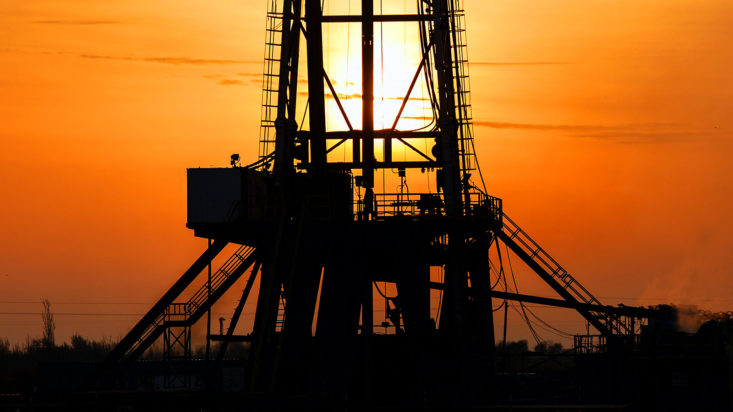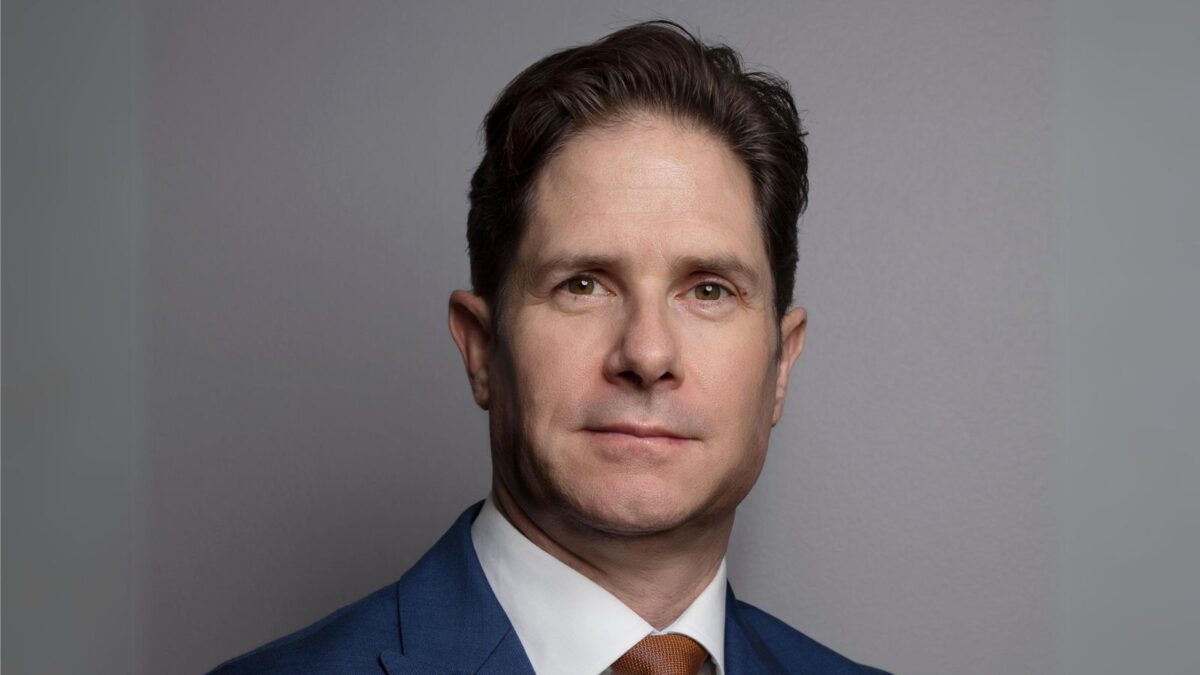The View from the Oasis of Optimism
It’s a cliché that sometimes, the best way to view a problem is to go somewhere else and look at it from a different perspective.
That’s certainly the view of Peter Berezin, chief global strategist at BCA Research, who took off to the Middle East to take a look at the US economy.
That’s not literally true – Berezin was visiting clients in Saudia Arabia, Bahrain, and Abu Dhabi – but the trip definitely gave him a different view, from what he describes as an “Oasis of Optimism.”
Because most Middle Eastern currencies are pegged to the greenback, the region effectively imports its monetary policy from the US, he says. Not surprisingly, Berezin found clients who were very focused on the Federal Reserve, with many expressing concern about the abrupt pace of rate hikes. The Middle East doesn’t want the Fed to bring about a recession in the US, which would spread to the rest of the developed world, and slash petroleum demand – and prices. Wanting to put the dampening effect of the pandemic behind it, US recession is not on the Middle East’s wishlist.
Some of his clients cited the negative Q1 US GDP reading and the near-zero Q2 growth estimate in the Atlanta Fed GDPNow model as evidence that a US recession is “either close at hand or has already begun.” But Berezin was pleased to bring reassurance on that front:
“We would push back against such an interpretation. In contrast to the -1.5% real GDP print, US real Gross Domestic Income (GDI) rose by 2.1% in Q1. Conceptually, GDP and GDI should be equal, but since the two numbers are compiled in different ways, there can often be major statistical discrepancies. A simple average of the two suggests the US economy still grew in the first quarter,” he told his Middle Eastern clients.
More importantly, real final sales to private domestic purchasers rose by 3.9% in Q1. “This measure of economic activity – which strips out the often-noisy contributions from inventories, government expenditures, and net exports – is the best predictor
of future GDP growth of any item in the national accounts,” Berezin says.
“As far as Q2 is concerned, real final sales to private domestic purchasers are tracking at 2.0% according to the Atlanta Fed model – a clear deceleration from earlier this year, but still consistent with a generally healthy economy.”
BCA believes that the “neutral rate” of interest in the US has risen as the household deleveraging cycle has ended, fiscal policy has become structurally looser, and a growing number of baby boomers have transitioned from working (and saving) to retirement (and dissaving). The markets have rapidly priced in this view over the course of 2022. The 5-year/5-year forward Treasury yield – a proxy for the neutral rate – has increased from 1.90% at the start of the year to 3.21% at present. “The good news is that a high neutral rate helps insulate the economy from a near-term recession. Recessions typically occur only when monetary policy turns restrictive,” he says.
The BCA thesis would have been comforting to its Middle Eastern clients, who otherwise inhabit an “Oasis of Optimism” – by which Berezin was impressed.
“In contrast to the rest of the world, the mood in the Middle East was upbeat,” says Berezin. “While high oil prices are helping, there is also a lot of optimism about ongoing structural reforms. Petrodollar (the US dollars earned from exporting oil and gas) flows are increasingly being steered towards private and public equities. EM (emerging market) assets stand to benefit the most.
The Middle East is, quite simply, back in town, because black gold is back in town – oil is up 49% in 2022.
While the International Monetary Fund (IMF) estimated in October 2021 that Saudi Arabia, for example, needed an oil price of US$72.40 a barrel to balance its budget this year, oil prices (Brent) are at US$117.70. Earlier this month, the Kingdom raised the July official selling price (OSP) for its flagship Arab light crude to Asia by US$2.10 to a $6.50 premium over Oman/Dubai quotes, just short of the all-time-high recorded in May when prices hit highs due to worries of disruptions in supplies from Russia (Saudi Aramco sets different OSPs for various grades of crude, depending on where the cargoes are headed; the OSP is based on the oil price cash/futures spreads on the Dubai Mercantile Exchange [DME]).
Lost Russian supply has put a rocket under oil and gas prices; and while Saudi Arabia and the United Arab Emirates (UAE) have been seen as the only two countries in the Organization of the Petroleum Exporting Countries (OPEC) with spare capacity to make up the shortfall, both are considered to be close to their near-term capacity limits. It has been reported that French President Emmanuel Macron told US President Joe Biden on the sidelines of the G7 meeting that the UAE was producing at maximum capacity, and Saudi Arabia could increase output by only 150,000 barrels per day (bpd), well below its “nameplate” spare capacity of about 2 million bpd.
But it’s an interesting situation for the producer nations, to say the least. While Saudi Arabia and the UAE promise to do their best to help other nations deal with higher energy prices, on the other side of the ledger they are quietly rolling in it. Saudi oil export revenues are climbing and could set a record this year, according to Middle East Petroleum and Economic Publications, which tracks the industry, pushing the kingdom’s trade surplus to more than US$250 billion.
One of the group’s publications, Middle East Economic Survey (MEES), says that in March (the most recent data), Saudi oil revenues surged to their highest level since the 2014 oil price crash, at just over US$30 billion. To put that in context, in April 2020, the Kingdom was bringing in about US$7 billion a month. Put simply, the Saudis – even though Crown Prince Muhammad bin Salman plans to transform the country and end its “addiction to oil” – are delighted at where oil prices find themselves.
However, the Arab oil producers have seen this movie before. While they are boosting output, to “stave-off a super-spike in oil prices,” as Berezin puts it, that is not entirely an altruistic decision. “The region’s oil exporters know that excessively high oil prices could tip the global economy into recession, an outcome that would surely lead to much lower oil prices down the road,” he says. There was not much clarity on what that tipping point is that would induce global recession, he says, “but US$150 per barrel got bandied around a lot” on his visit.
Politics is also a factor. “A further rise in oil prices could compel the US to make a deal with Iran, something the Saudis do not want to see happen,” Berezin says.
The backdrop to that comment is the changing geo-political situation in the Middle East, which of late has been stunning in many ways. Most notable has been the thawing of relations between Israel and parts of the Sunni Arab world, with that thawing set against the Shia/Sunni rivalry for the leadership of the Islamic world, as well as Shia Iran’s nuclear ambitions and its broader regional role in funding and arming the likes of Hezbollah in Lebanon, HAMAS in Gaza and the Houthis in Yemen. Since then-US President Donald Trump and Israel’s then-prime minister Benjamin Netanyahu established the Abraham Accords in 2020 – a treaty linking Israel with the United Arab Emirates, Bahrain, Morocco and Sudan – the progress toward (and encompassing) formal relations has continued, with diplomatic relations between Israel and Saudi Arabia seen as the ultimate aim.
However, to say there are issues to work through is an understatement; most notably, the Palestinian issue. There have also been limited talks between Saudi Arabia and Iran. It’s clear that Riyadh is changing, slowly, and changing the region with it.
Berezin says the “very positive” mood in the region is not only on the back of the higher oil prices. He says investors are “encouraged by ongoing structural reforms, especially in Saudi Arabia where the Vision 2030 program is being rolled out. The program seeks to diversify the Saudi economy away from its historic reliance on petroleum exports. A number of people I spoke with cited the Saudi sovereign wealth fund’s acquisition of a majority stake in Lucid, a California- based electric vehicle (EV) startup, as the sort of bold move that would have been unthinkable a few years ago.”
Berezin reports that Riyadh had “changed immensely” since his first visit, in May 2011. “The number of restaurants and entertainment venues has increased exponentially. The ban on women drivers was lifted only four years ago. In that short time, it has become a common-day occurrence.”
Capital flows into and out of the region are reflecting a “new geopolitical reality,” he says. “The freezing of Russia’s foreign exchange reserves sent a shockwave across much of the world, with a number of other emerging markets (EM) countries wondering if ‘they are next.’ Ironically, the Middle East has emerged as a neutral player of sorts in this multipolar world, and hence a safer destination for capital flows.”
On the flipside, the region’s oil exporters “appear to be acting more strategically” in how they allocate their petrodollar earnings. “Rather than simply parking the proceeds of oil sales in overseas US dollar bank accounts, they are investing them in ways that further their economic and political goals. One clear trend is that equity allocations to both overseas public and private markets are rising. Other emerging markets stand to benefit the most from this development, especially EMs who have assets that Middle Eastern countries deem important – assets tied to food security being a prime example.”
Assuming that the current level of oil prices is maintained, BCA estimates that non-US oil exports will rise to US$2.5 trillion in 2022, up from US$1.5 trillion in 2021. About 40% of this windfall will flow to the Middle East. “That is a big slug of cash, enough to influence the direction of equity markets,” he says.











